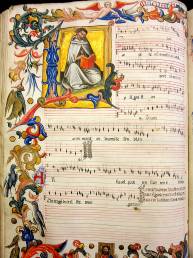European Ars Nova

Dante Alighieri in Italy and, one century later, Eustache Deschamps in France conceived and defined poetry as music in itself, as a text with its own proportional harmony – cantus according to Dante and musique naturele according to Deschamps. Both authors specify that each poem is structured so that it can be set to music (sonus, nota, melos, oda according to Dante; musique artificiele according to Deschamps): ‘every stantia is harmonized to receive a certain type of oda’ (De vulgari eloquentia); ‘the chansons natureles are embellished by the melody and the tenors, tripla and contratenors of the musique artificiele’ (Art de dictier).
At the turn of the fourteenth century, Romance lyric poetry met polyphony. Some poetic texts were set to music by adopting the system of musica mensurabilis, which assigned a specific length value to each sound. In the early decades of the fourteenth century, mensural notation was further developed. Both binary and ternary divisions were now admitted, and the possibility to represent a wider scale of rhythmic values was also accepted. A new notational system was thus introduced in response to the need to write a kind of music that was melodically and rhythmically more complex.
The complexity of Ars Nova polyphony, with its melodic ornamentation and its elaborate rhythmic solutions, can be an obstacle to the proper comprehension of the words. In fact, when listening to an Ars Nova setting of an unknown poetic text, it is not always possible to fully perceive the meaning of the words. In the polytextual motet, in which each voice sings a different text simultaneously, the unintelligibility of the word reaches its peak. This form of coexistence between poetry and music, in which the latter seems to predominate over the former, has led scholars to believe that the lyrics are to be regarded as subordinate to the music, and, consequently, that the poems set to music by Ars Nova polyphonists constitute a secondary and negligible repertoire instead of being the formal and thematic foundations of the musical composition. As a matter of fact, many of these poetic texts manifest a refined symbolism and an elegant pursuit of technical virtuosity, which contradict the current historical-critical evaluation.
In view of these considerations, the first research line of the project re-evaluates and interprets the poetic repertoire of the Ars Nova (about 1200 texts, in Latin, Italian and French), while trying to understand what becomes of poetry when it is involved in the complex architecture of polyphonic music – that is, to examine the relationship between these two types of music (the music of the words and the music of the notes) in order to understand its meaning and the way it was perceived.
The first compositions of Ars Nova, the motets included in the Roman de Fauvel, are functional to political satire and reveal a militant vocation. In addition, many Ars Nova polyphonists were churchmen or monks working in the principal cultural centres of Europe, at the service of high prelates, lords and rulers who used music also as a means of personal and institutional propaganda. And yet, most of the poetic texts set to music follow the great tradition of Romance love poetry and have nothing to do, at least apparently, with morals or politics.
But what kind of love do they express, exactly? The social status of Ars Nova polyphonists, as well as their links to ecclesiastical institutions, suggest that the concepts of secular love and sacred love (caritas) can coexist and overlap in the lyrics they set to music. On this basis, the second research line of the project verifies how the ideology of courtly love, in which this poetry is steeped, can be compatible with the status of the polyphonists who have set it to music and whether it is possible to attribute to these love texts a moral and political meaning and a militant function.
The most important manuscript sources of the Ars Nova repertoire are anthologies produced in an ecclesiastical environment between the end of the fourteenth and the beginning of the fifteenth century, when the highest secular and religious authorities attempted by all means to put an end to the Western Schism. These are mostly multilingual anthologies, copied in Italy or by Italian copyists and gathering compositions on texts in Latin, Italian and French. So far analyzed for their musical content, the Ars Nova anthologies are the result of elaborate editorial projects developed and enriched over time, and their ideological orientation cannot be understood without taking into account the poetic texts, especially since the poetry of Ars Nova is preserved not only by manuscripts with music, but also by a considerable number of literary witnesses, in which it appears as an integral part of the entire lyrical repertoire.
For these reasons, the third research line of the project studies the manuscript tradition ‘on the side of poetical texts’, i. e. to reconstruct the ideological orientation of Ars Nova musical anthologies reading them as collections of poetry. The objective is to offer an analysis that grasps the meaning of each editorial project, tracing their development in those manuscripts which reveal multi-layered processes of compilation, going beyond the material aspects of manuscripts, palaeographic and codicological. At the same time, relationships between musical and literary sources are dealt with, in order to define the position of the Ars Nova poetry in the whole of European lyric poetry of the fourteenth and early fifteenth centuries.
The quality and reliability of the results from the three lines of research can only be ensured if the repertoire and its manuscript tradition are clearly defined, reliable critical editions are available, and the relationship between poetry and music can be analysed on a solid foundation.
Therefore, the project has led to the implementation of the ArsNova database, composed of three sections, an atlas and a concordance of poetic texts:
Catalogue of Ars Nova Manuscripts, Authors and Texts (CANT);
Corpus of Poetic and Musical Texts (ANT);
Repertory of Metrical and Musical Structures (ANS);
Interactive map (ATLAS);
Lemmatised Concordances (Corpus ArsNova).
The Ars Νοva Database, which reflects the interdisciplinary and multilingual nature of the project, has great potential, and it can be expected to become an innovative instrument as well as a methodological model for all future studies on poetry and music of the European Middle Ages.
DATABASE





